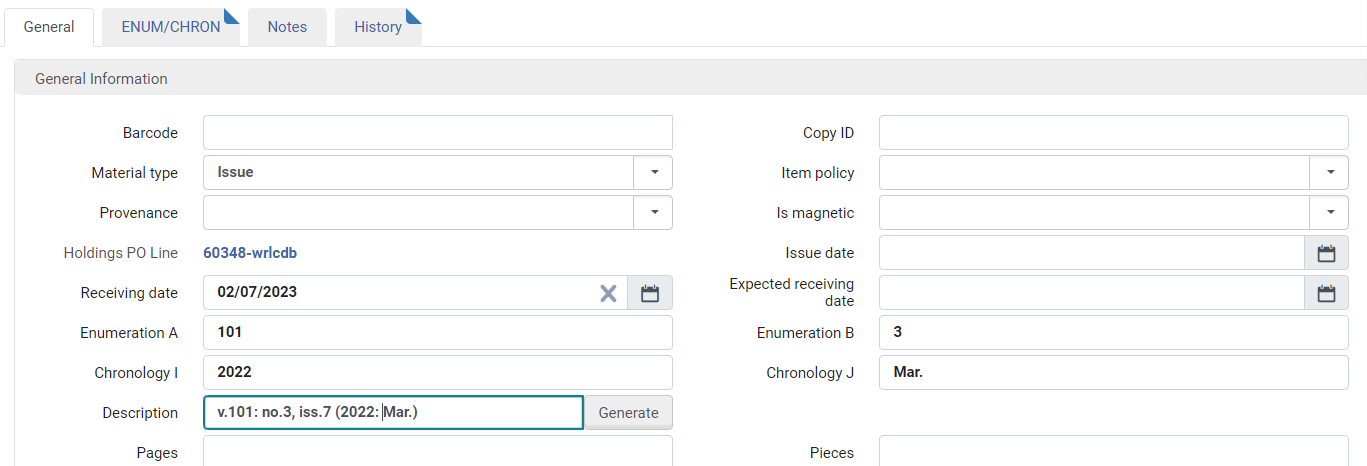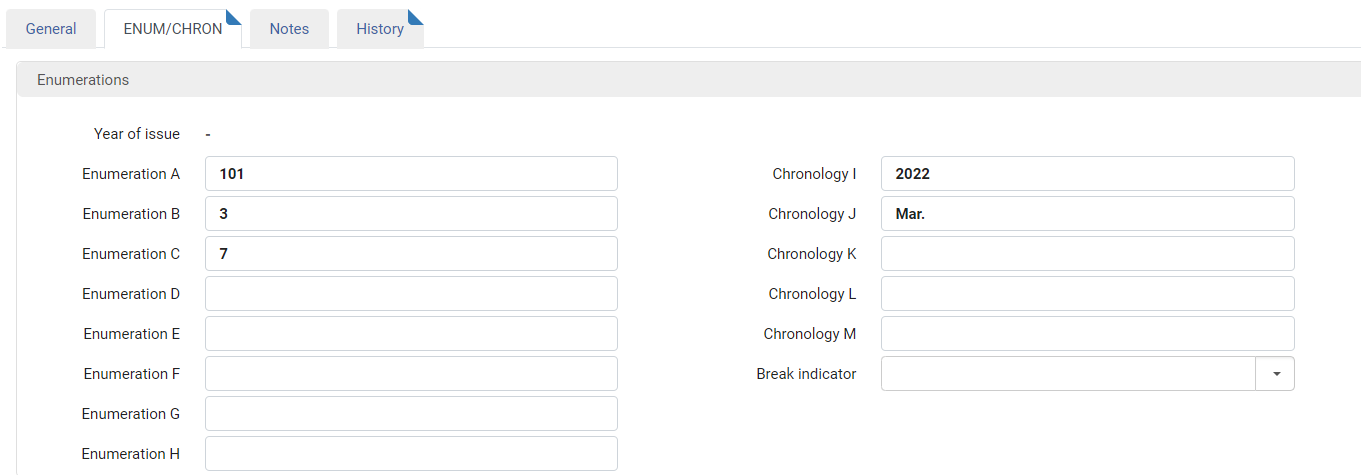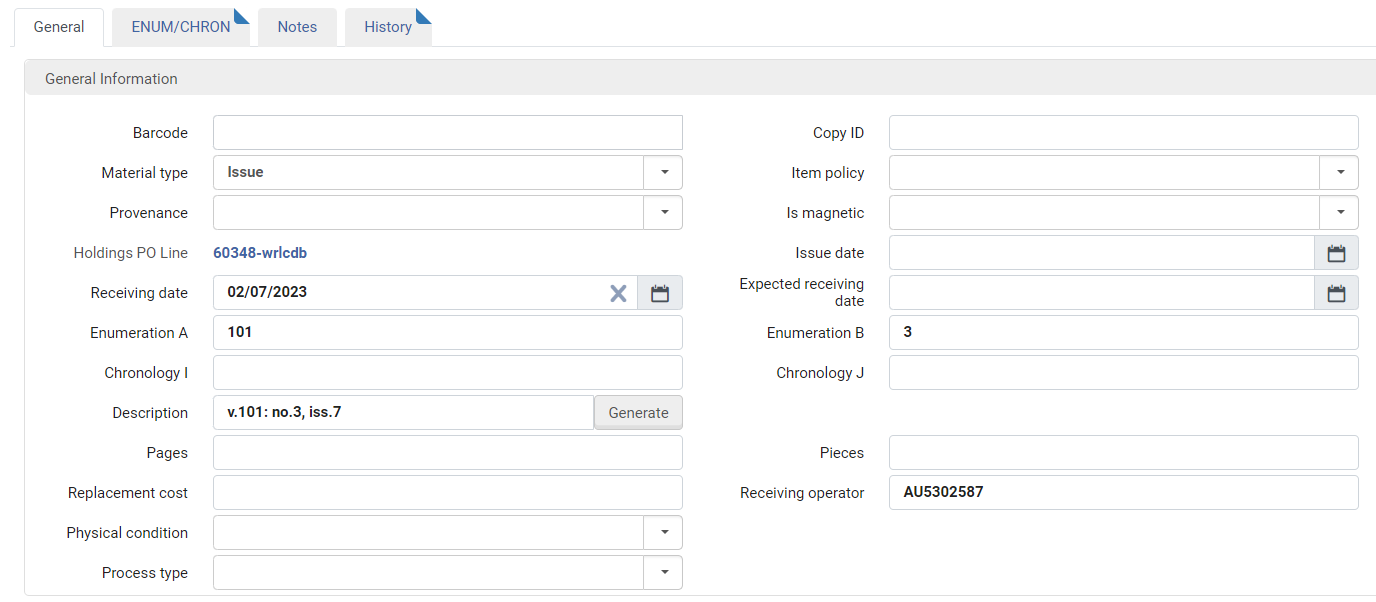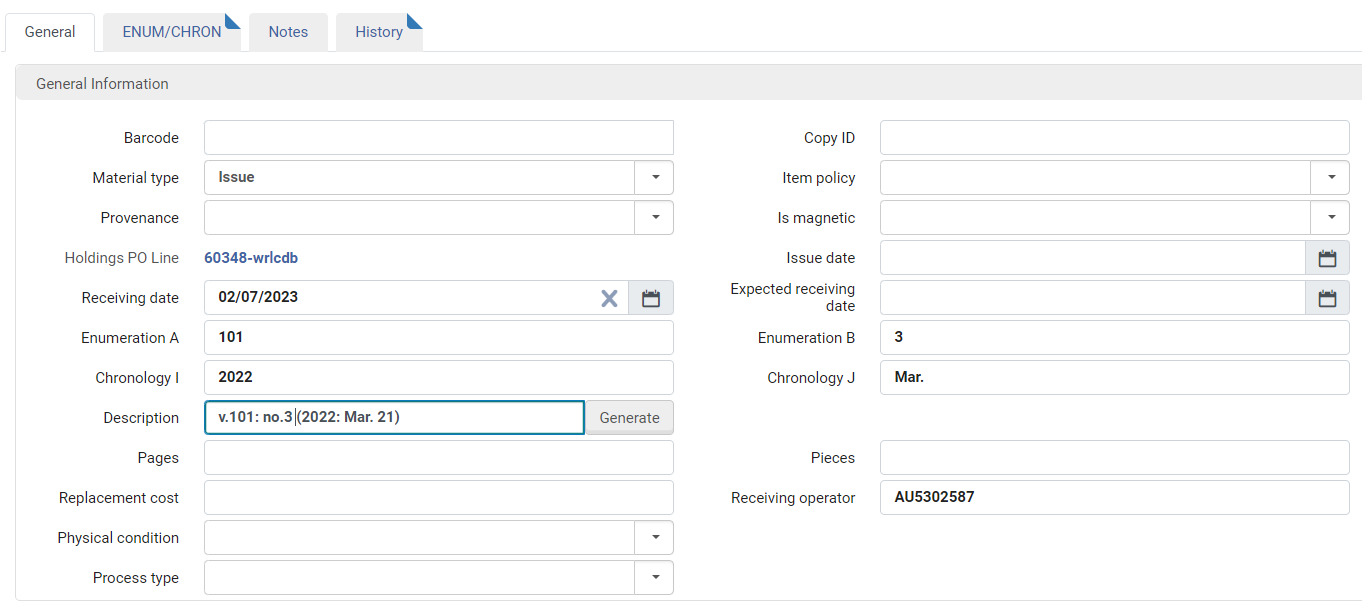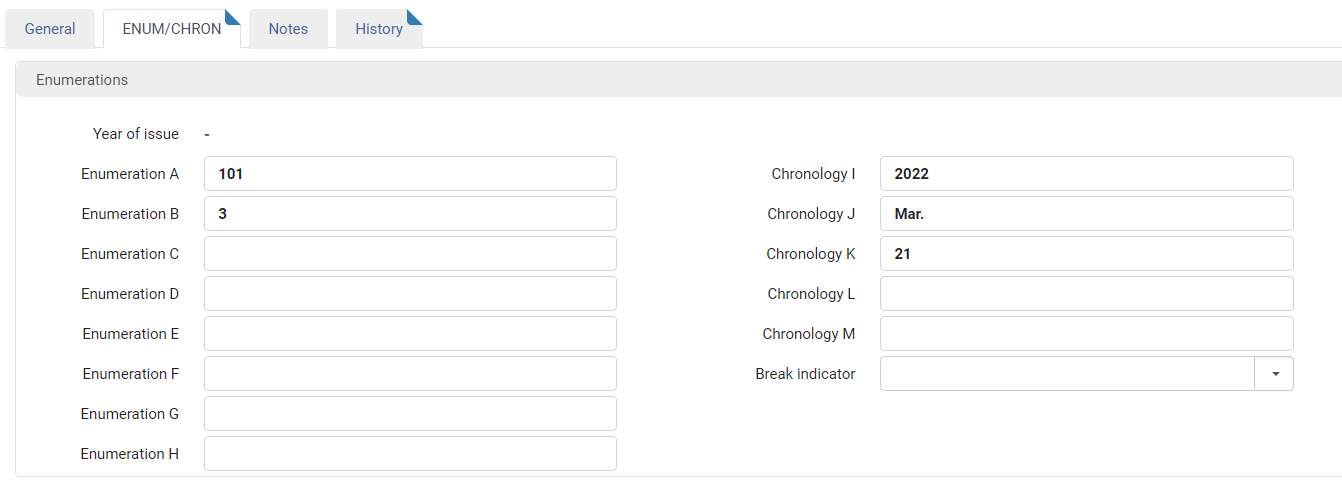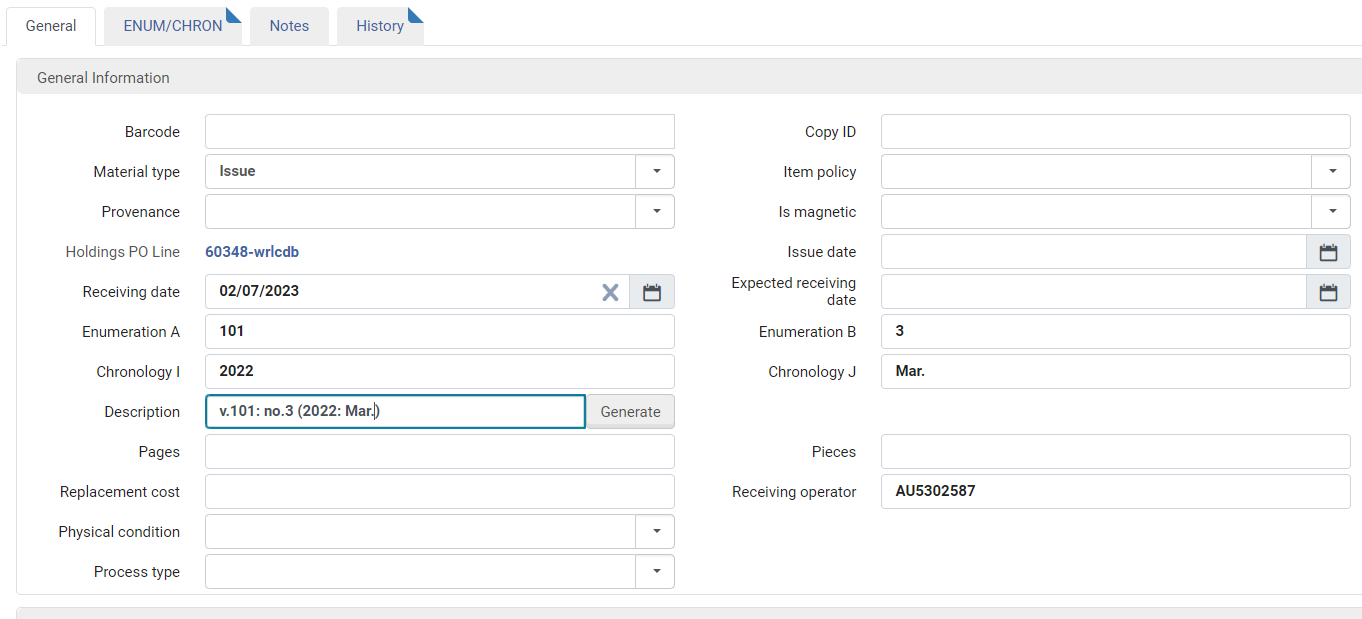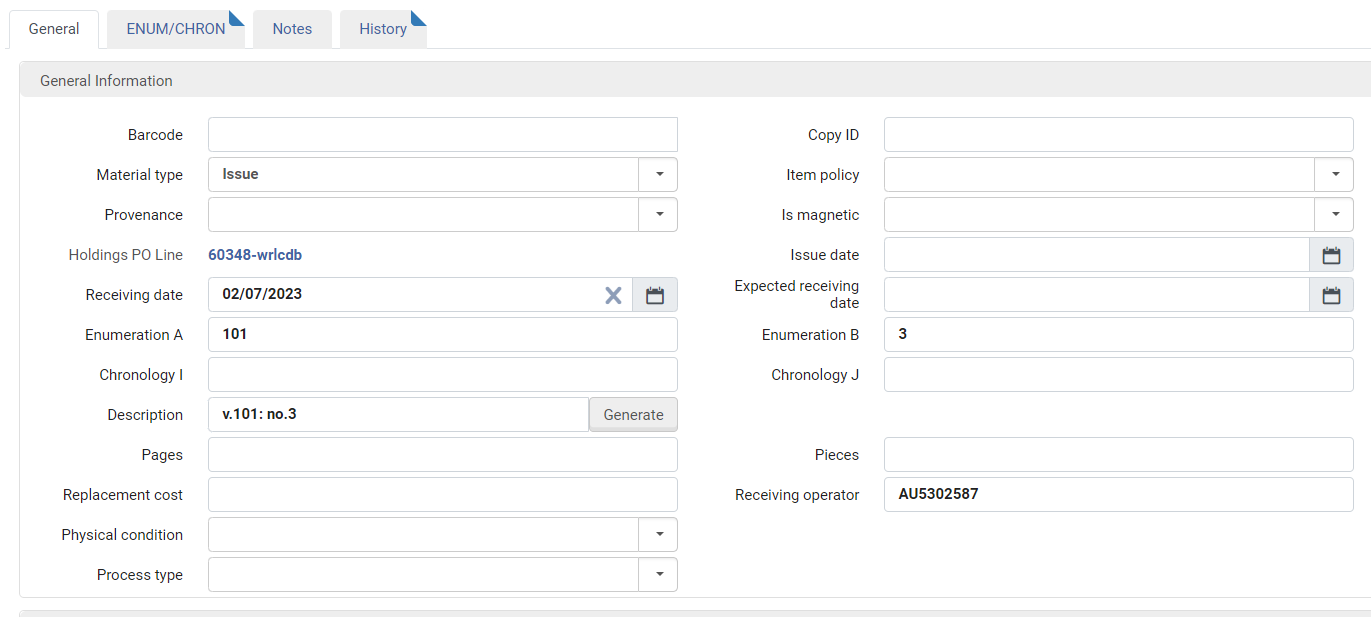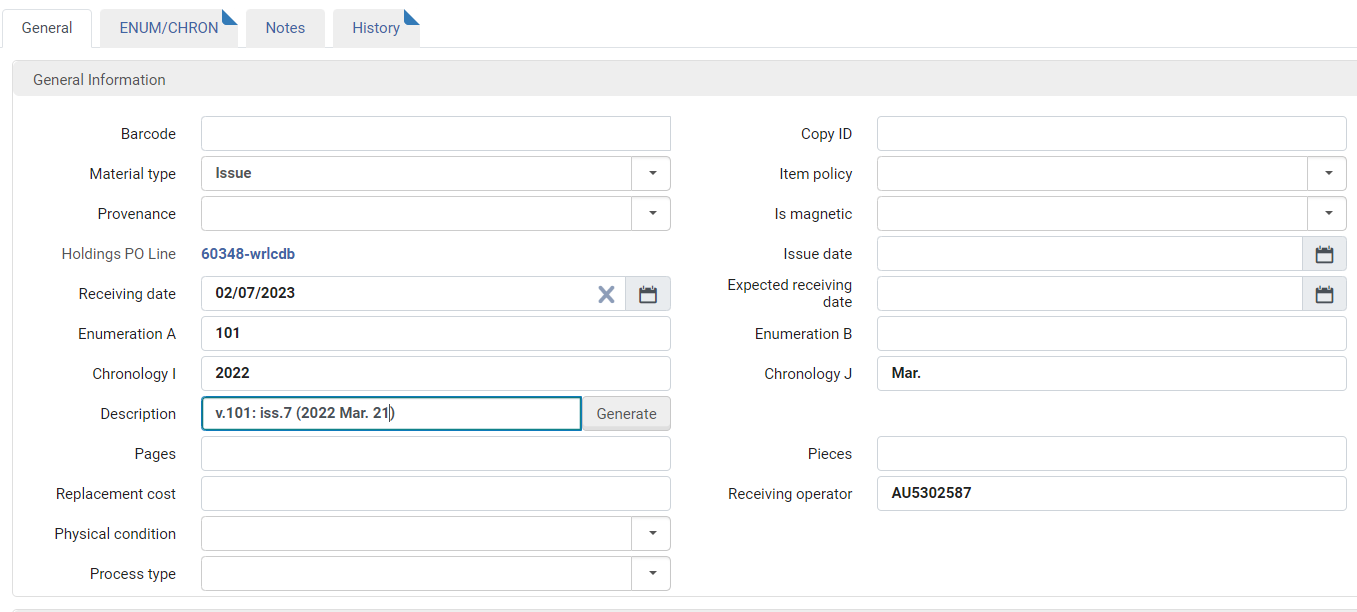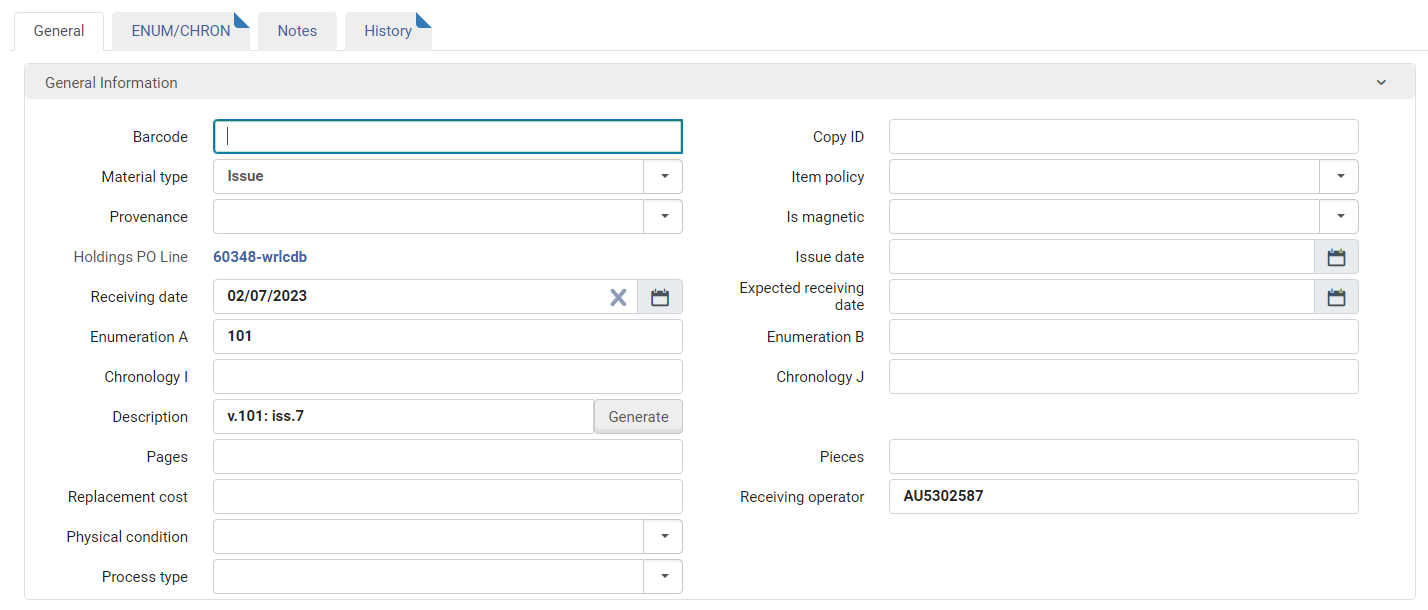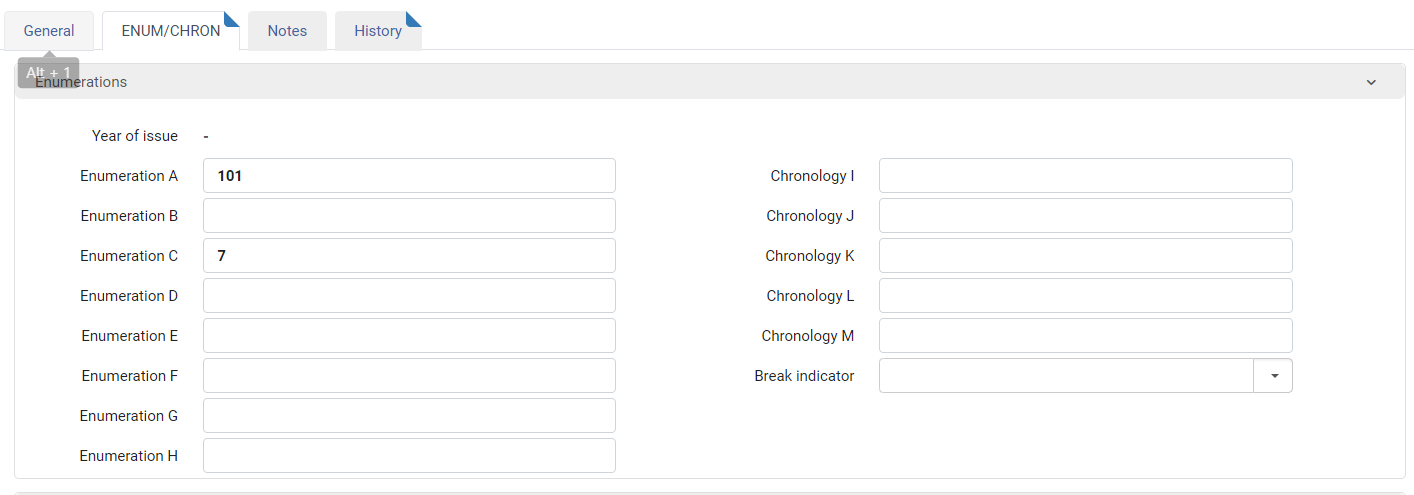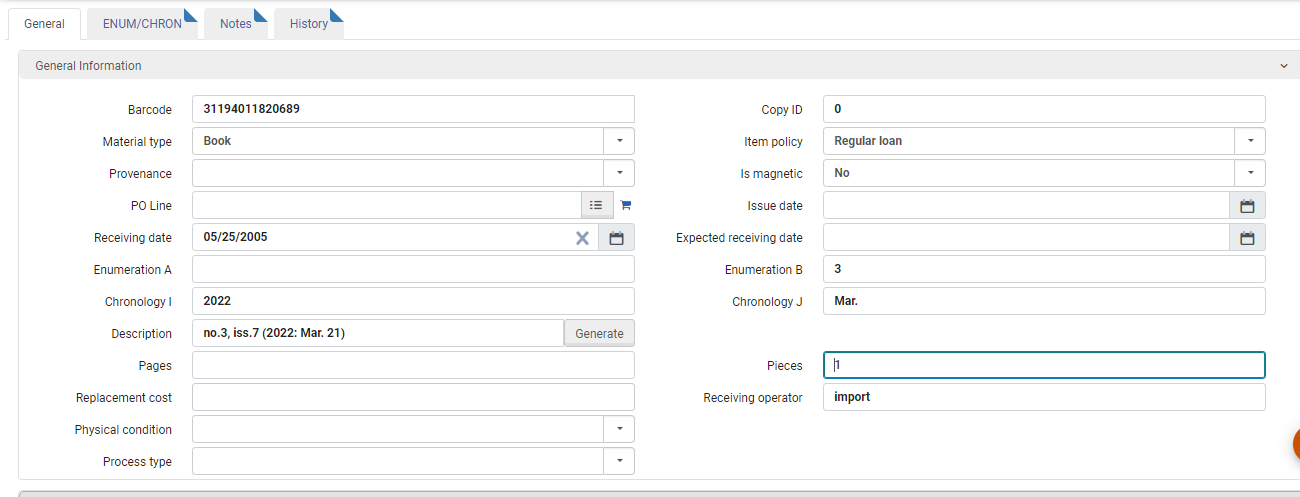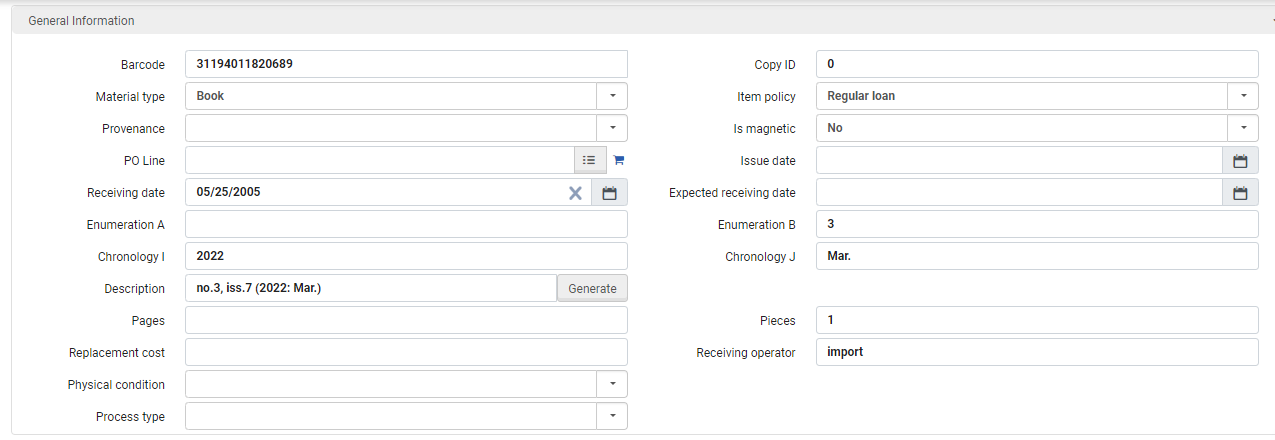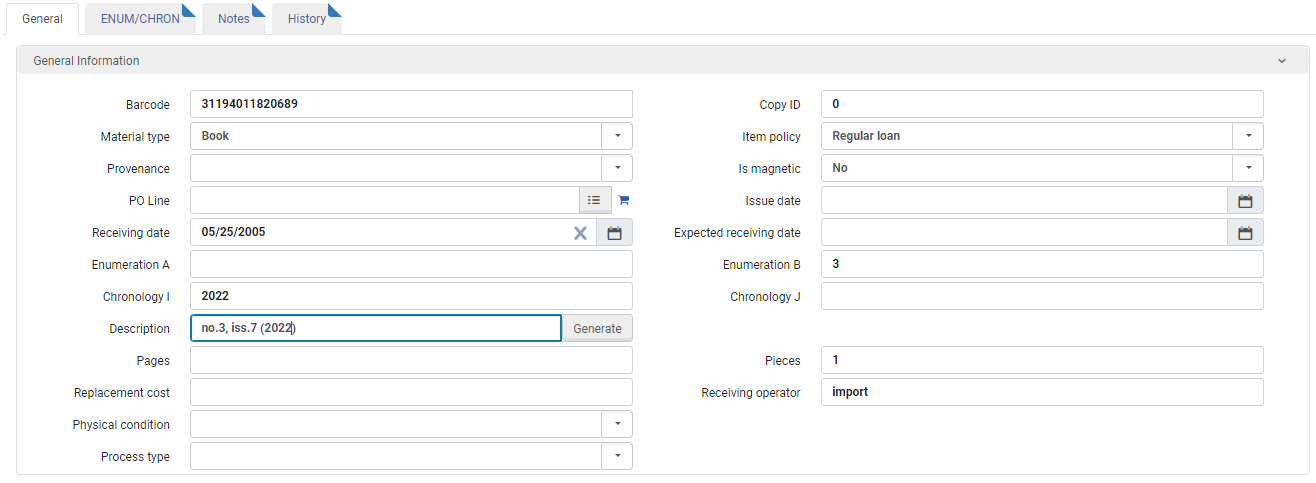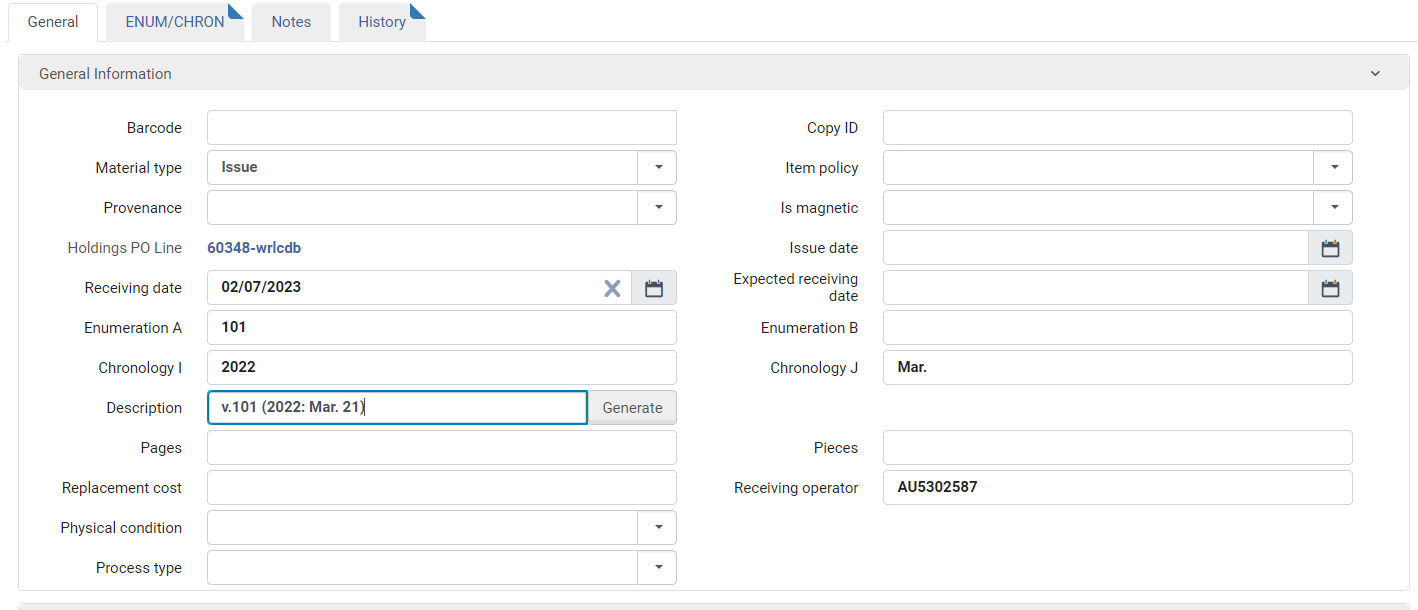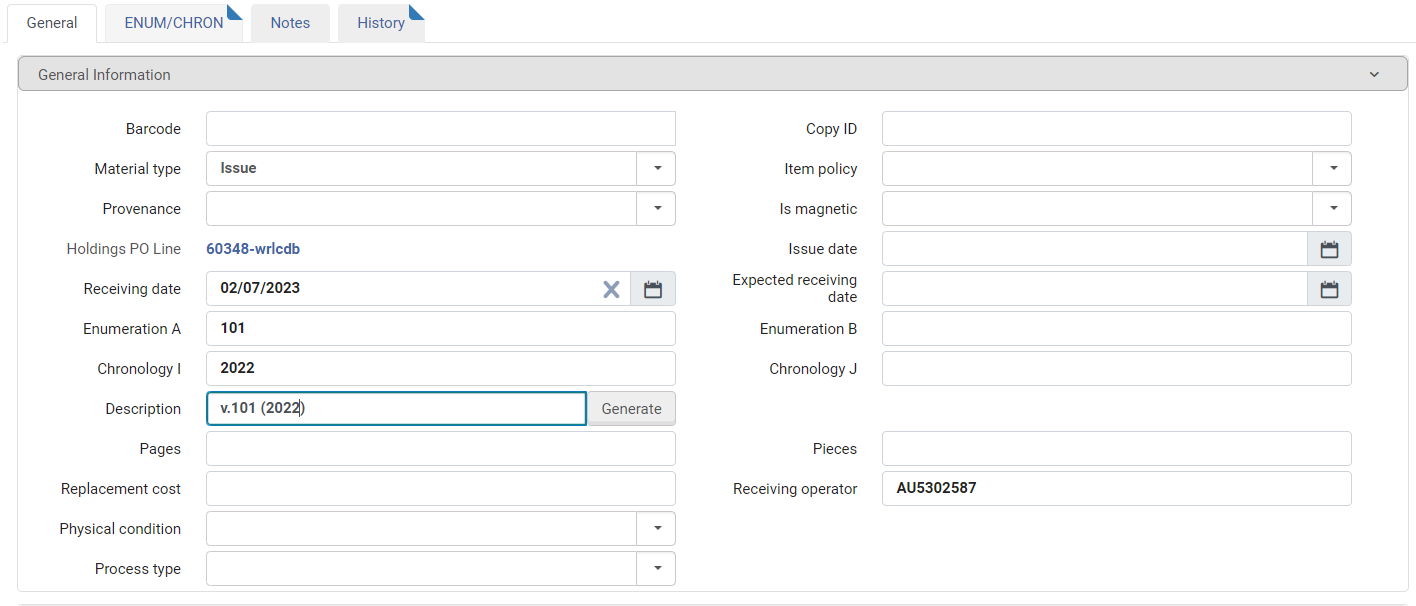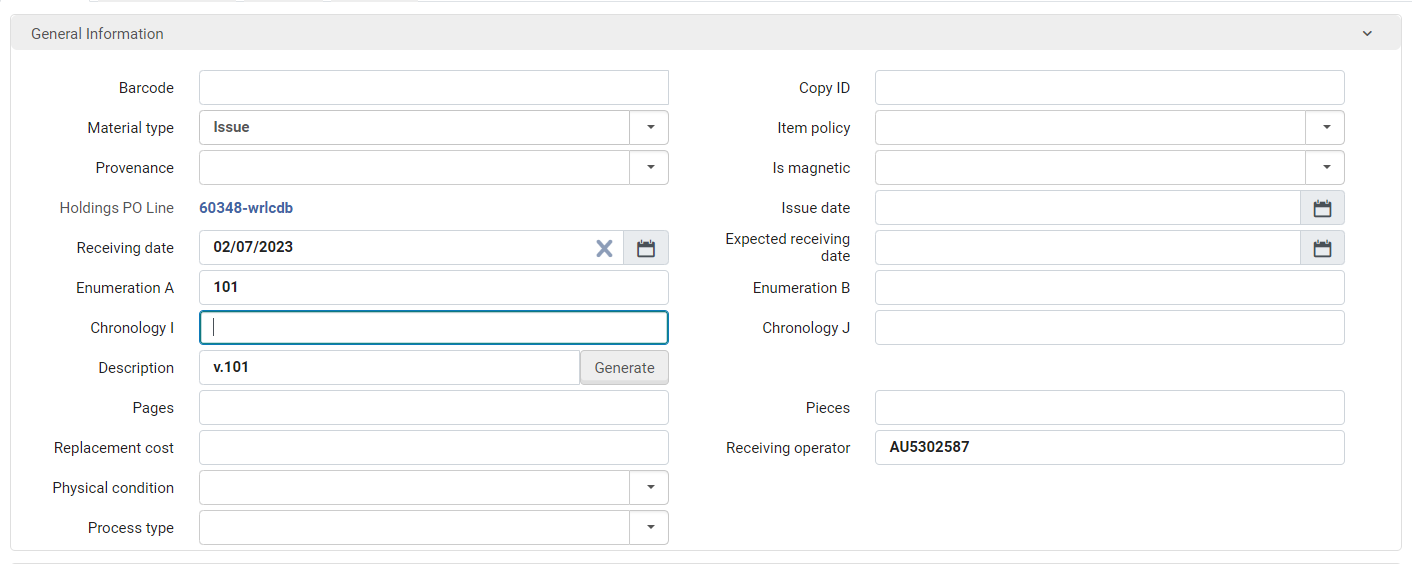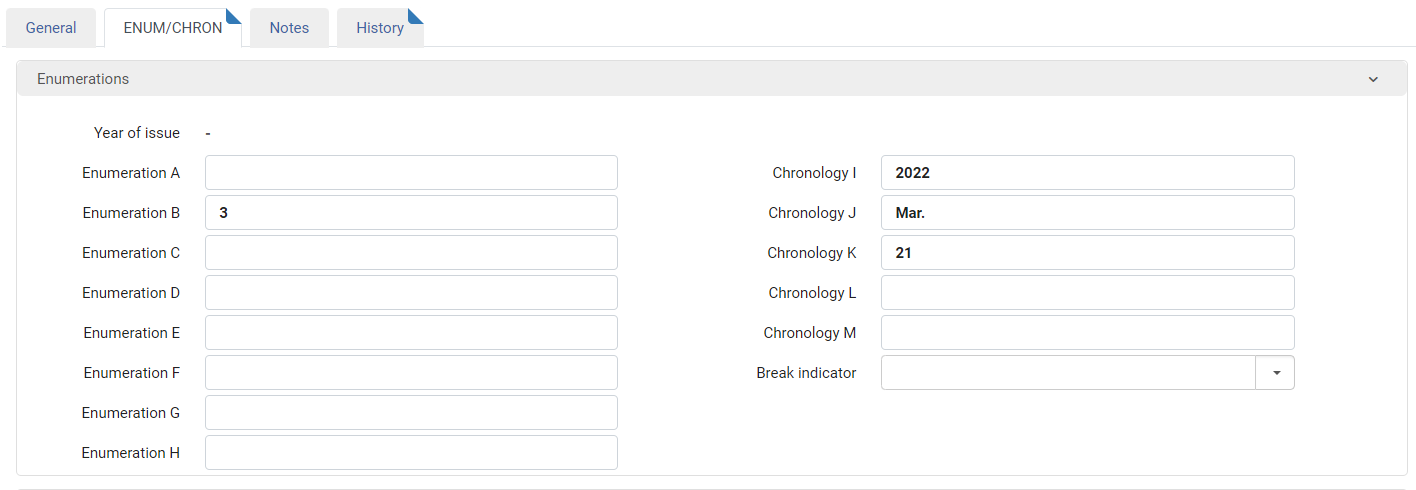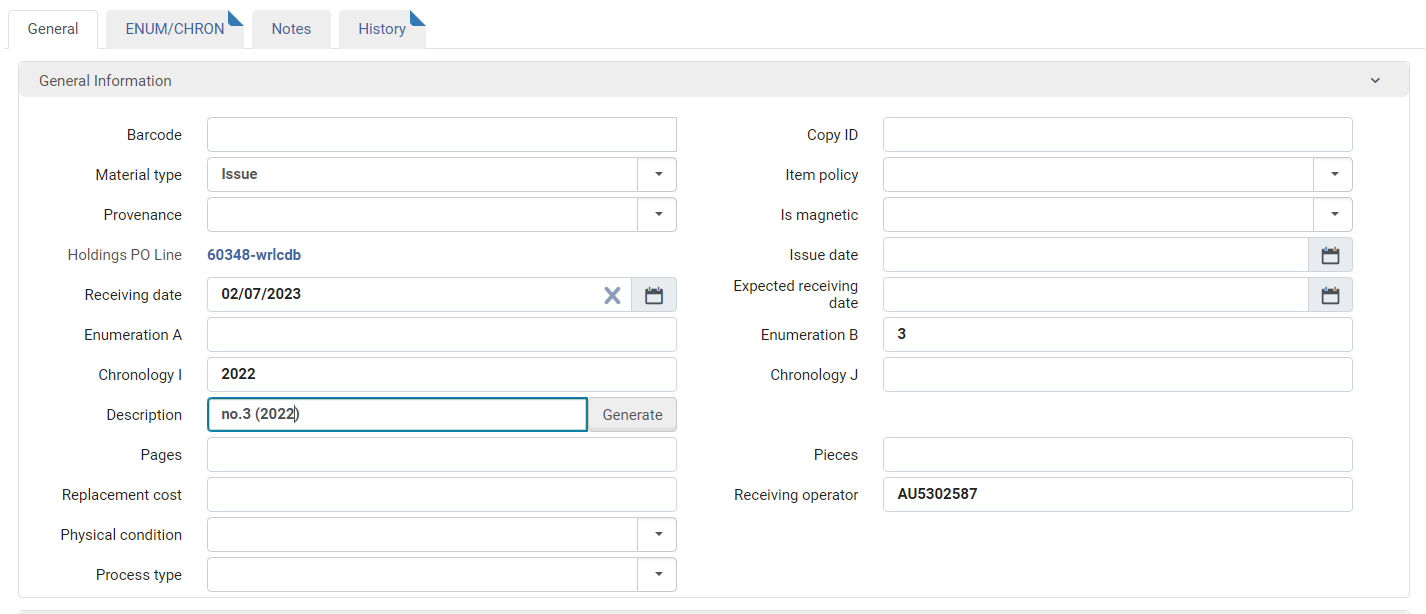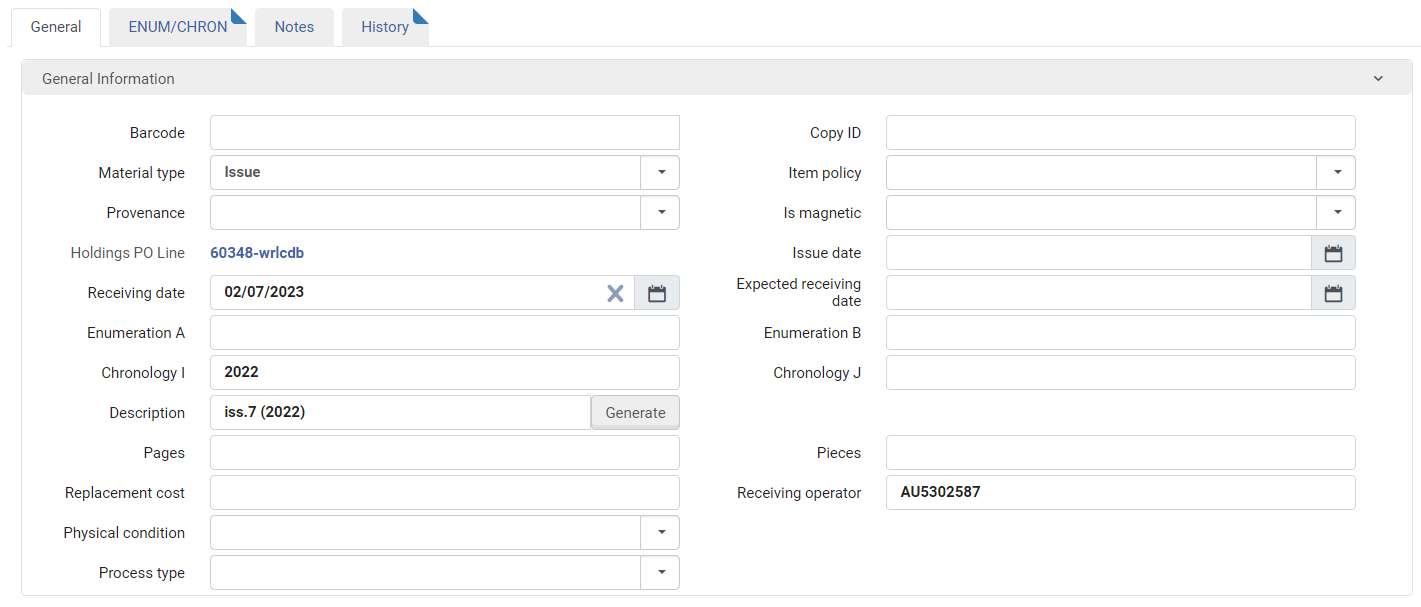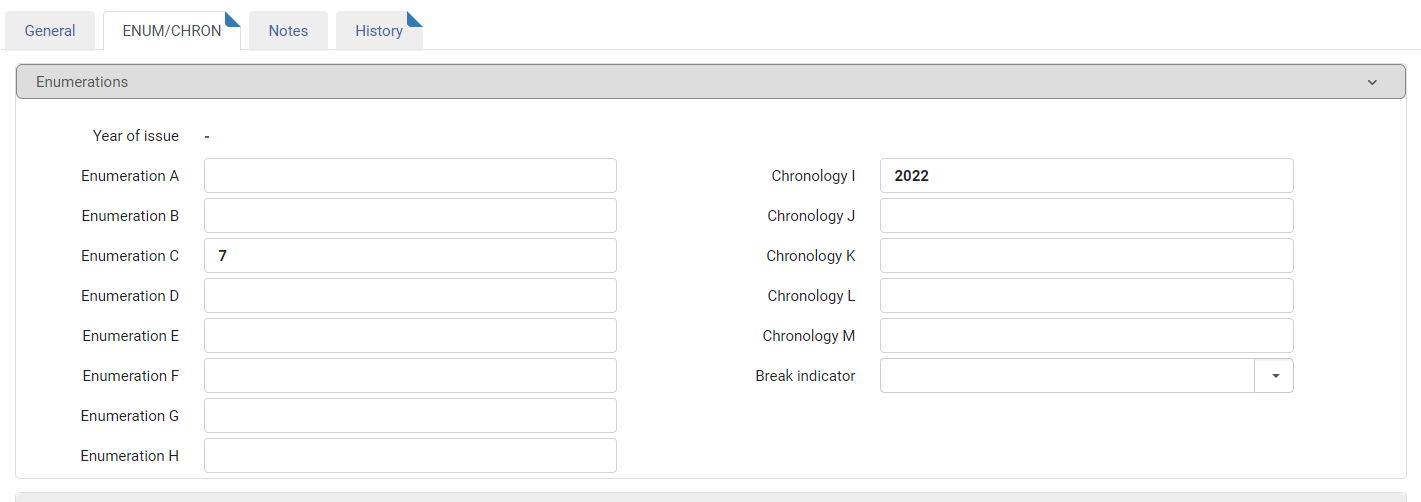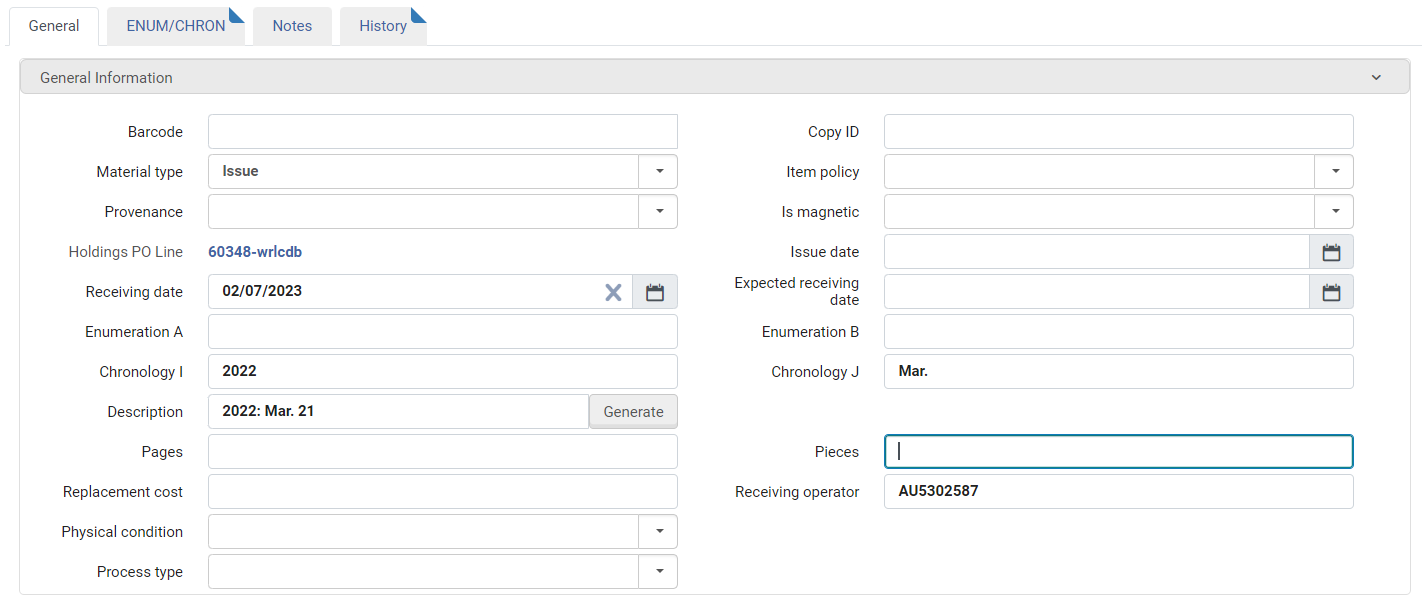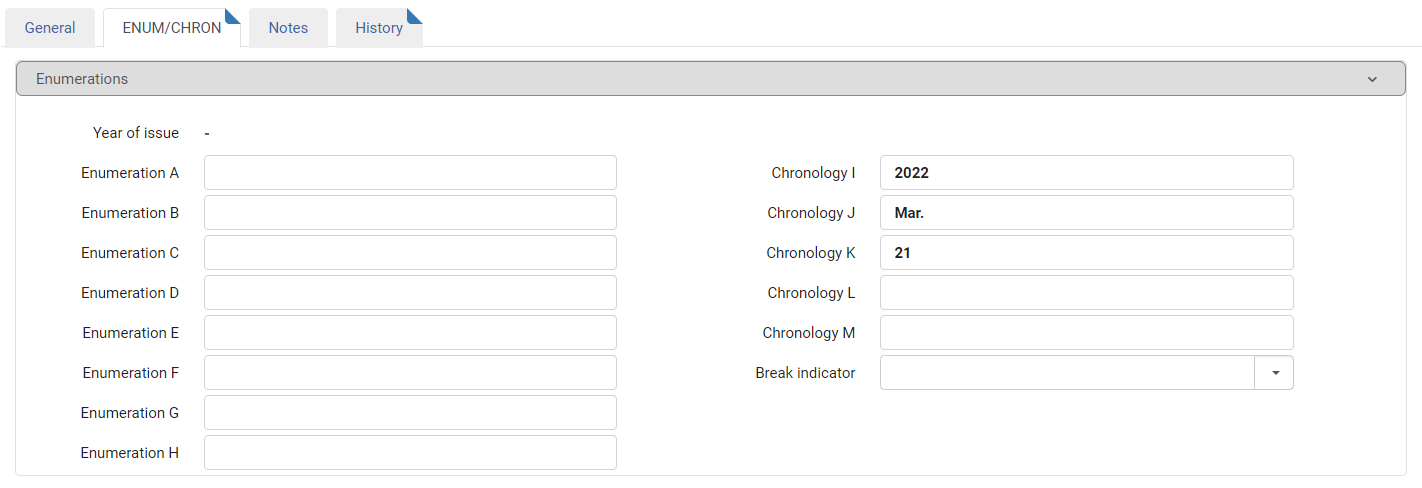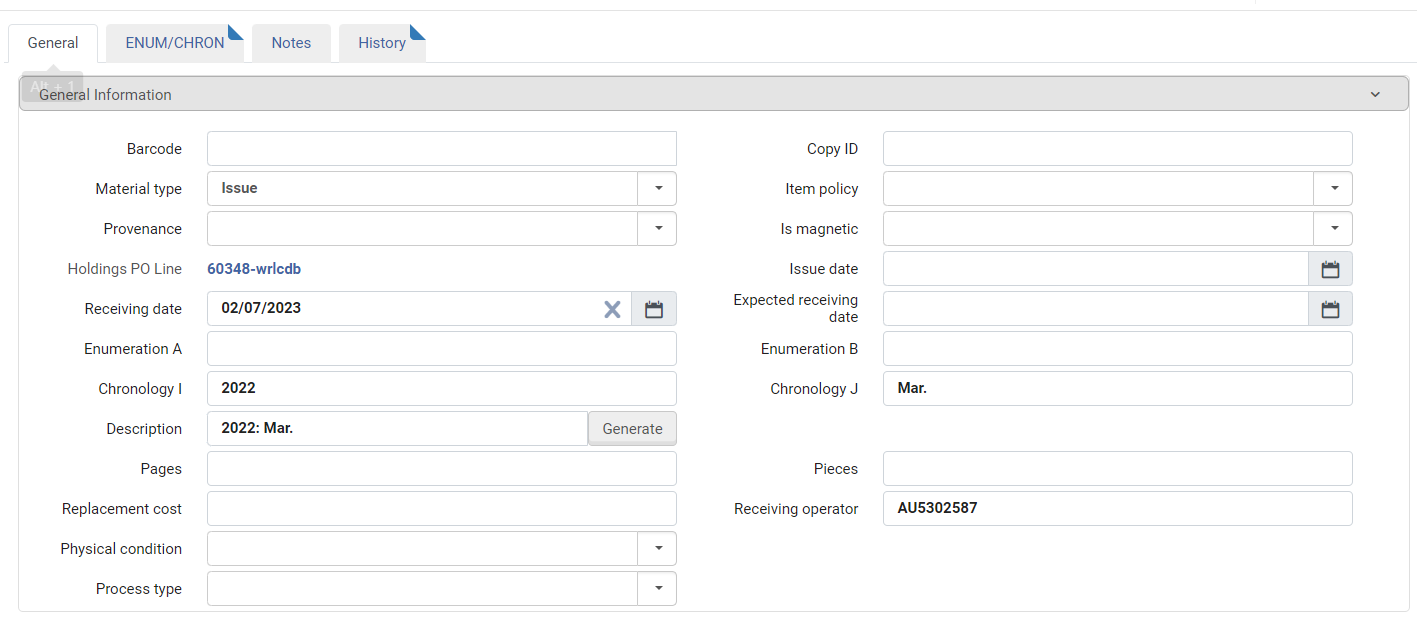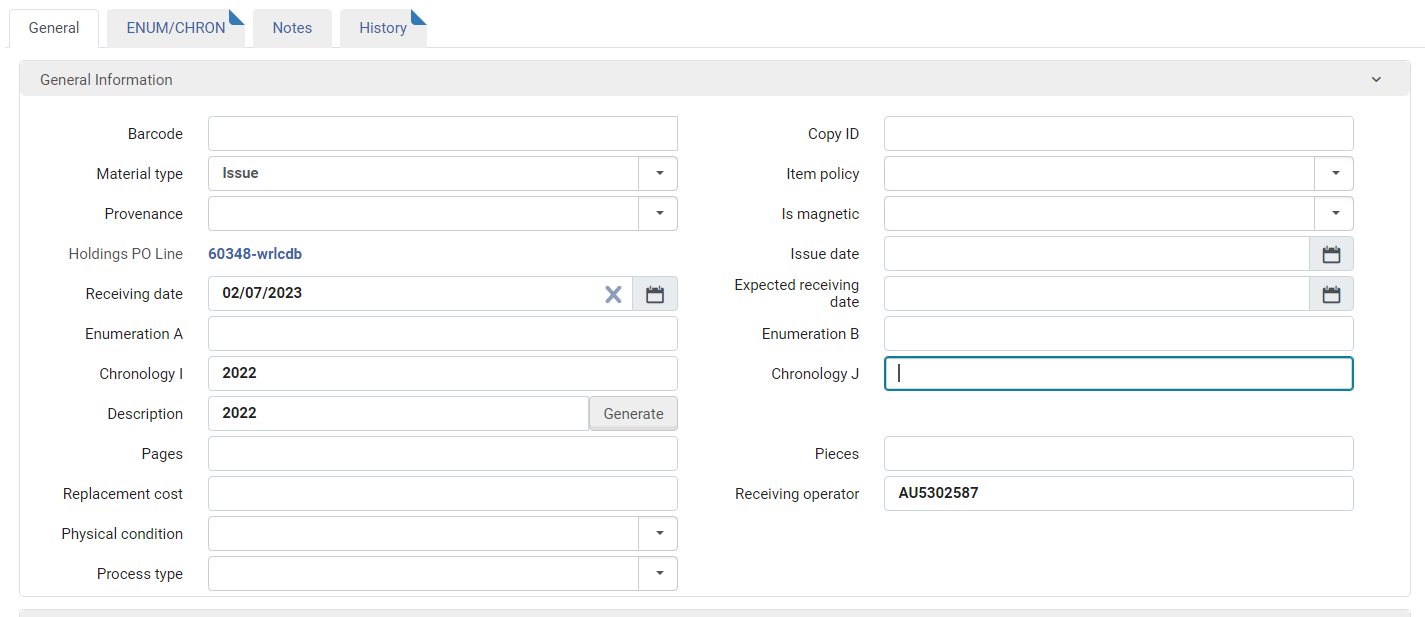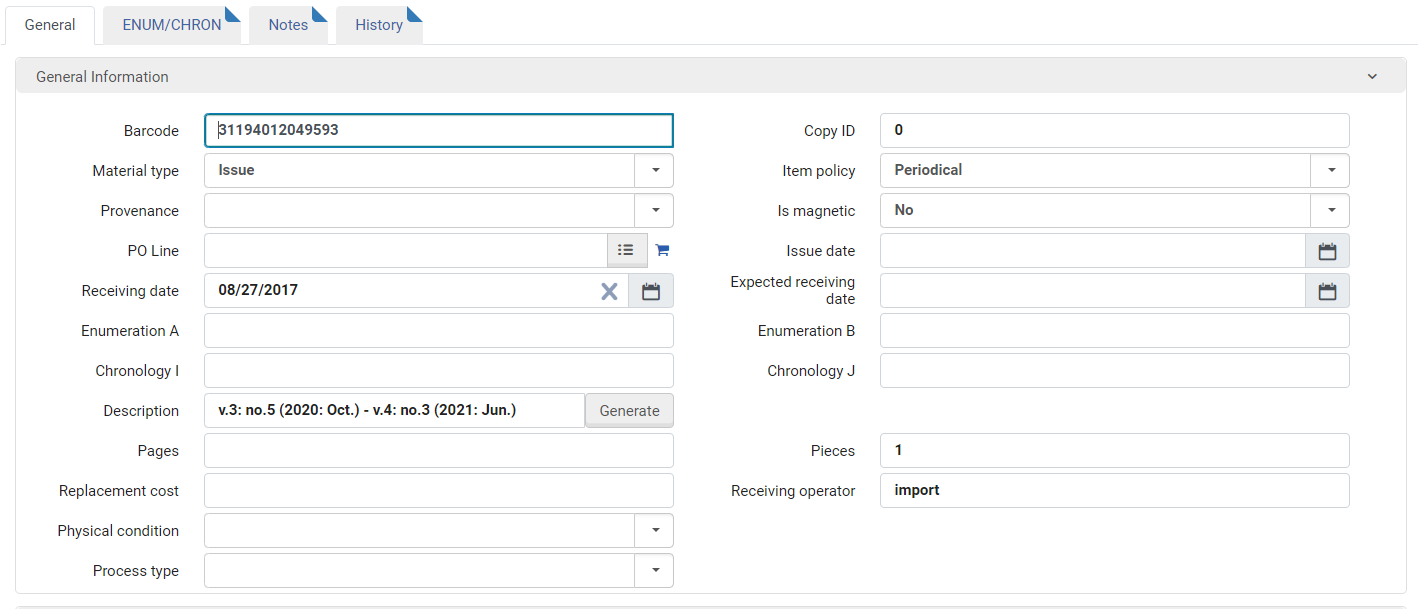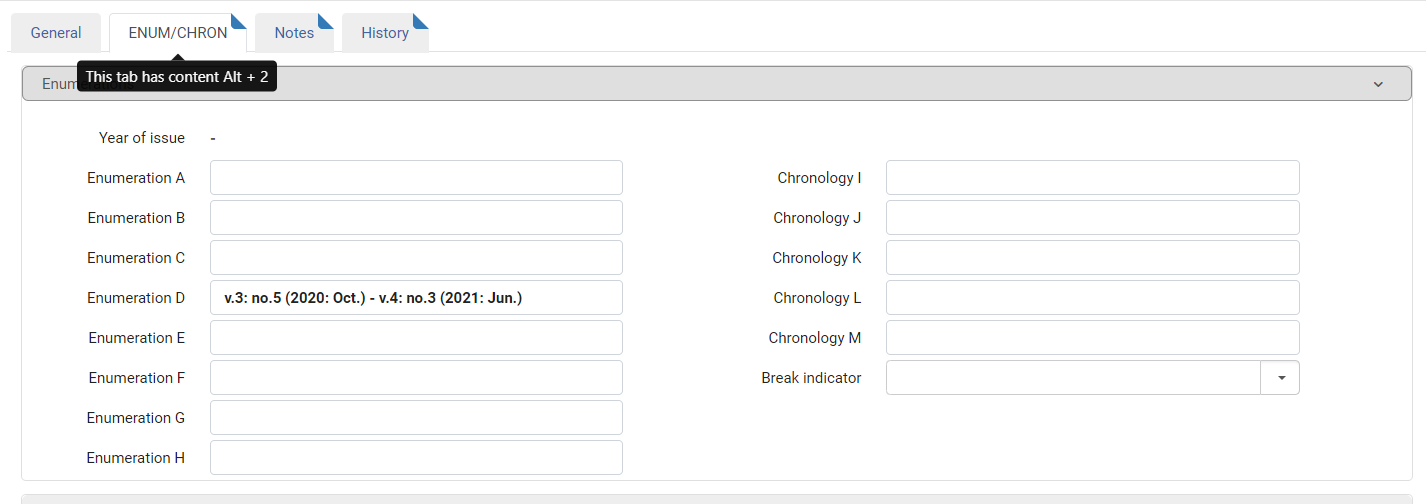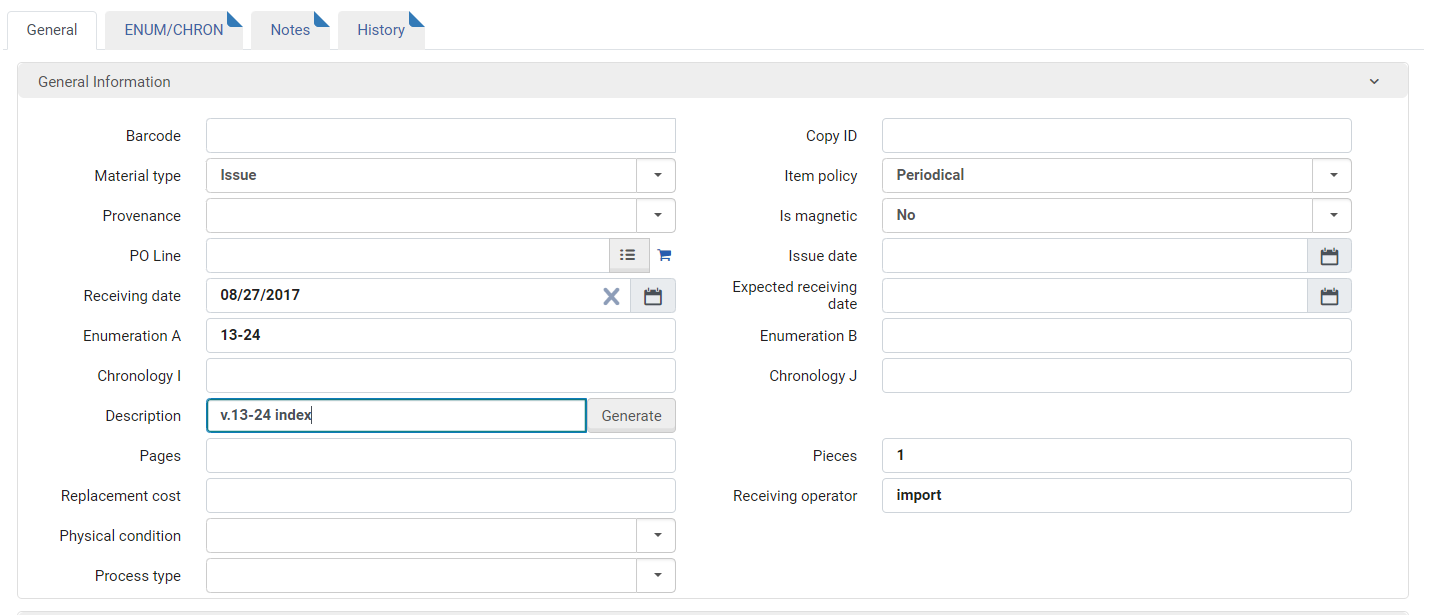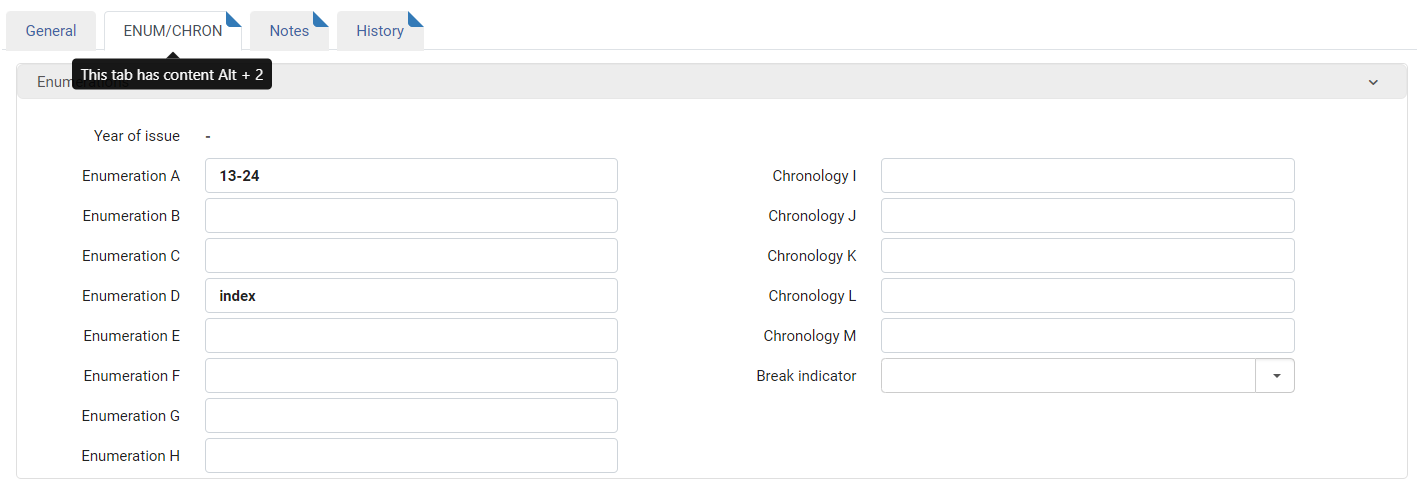Item Record Description Policies and Templates
Item record descriptions for print periodicals should follow the guidelines below. Every effort should be made to adhere to these guidelines for newly cataloged items. Legacy records should be corrected only as time and resources allow.
For a full list of WRLC recommendations for print periodicals, please see the following document :Recommendations for Print Periodicals in the Washington Research Library Consortium
Item Field Designations
Language of auto generated prefix
The auto generated prefixes are in English. Policy is left to each individual school on whether to always use English, or to use the language of the item being cataloged. If using the language of the item, the prefixes must be changed manually in the Description field of the Item Record.
Month abbreviations
Enter using the appropriate abbreviation. Policy is left to each individual school on whether to always use English, or to use the language of the item being cataloged.
If a language is not listed here, consult the CONSER documentation.
Enumeration D (Special Cases)
Enumeration D should be used for descriptive information that does not fit in the categories designated for Enumeration A-C and Chronology I-K. This can include new series (n.s.), parts (pt.), indexes, supplements, and others.
All prefixes for Enumeration D should be written in the Enum D field; no prefixes will be added to the Enum D value in the Description field.
In addition, complex descriptions for bound periodicals should be written with prefixes in Enumeration D; the information should not be written in any other Enumeration or Chronology fields. For an example, see Template {EnumD}
If Enum A-C and Chron I-K are used along with Enum D, the value in Enumeration D will always be added to the end of the Description field. For examples, see Template X {EnumD}
Templates configured in the WRLC NZ
v.{EnumA}: no.{EnumB}, {EnumC} ({Chronl}: {ChronJ} {ChronK})
v.x: no.x, iss.x (Year: Mo. Day)
Example : v.101: no.3, iss.7 (2022: Mar. 21)
v.{EnumA}: no.{EnumB}, {EnumC} ({Chronl}: {ChronJ})
v.x: no.x, iss.x (Year: Mo.)
Example : v.101: no.3, iss.7 (2022: Mar.)
v.{EnumA}: no.{EnumB}, {EnumC} ({Chronl})
v.x: no.x, iss.x (Year)
Example : v.101: no.3, iss.7 (2022)
v.{EnumA}: no.{EnumB}, {EnumC}
v.x: no.x, iss.x
Example : v.101: no.3, iss.7
v.{EnumA}: no.{EnumB} ({Chronl}: {ChronJ} {ChronK})
v.x: no.x (Year: Mo. Day)
Example : v.101: no.3 (2022: Mar. 21)
v.{EnumA}: no.{EnumB} ({Chronl}: {ChronJ})
v.x: no.x (Year: Mo./Season)
Example : v.101: no.3 (2022: Mar.)
v.{EnumA}: no.{EnumB} ({Chronl})
v.x: no.x (Year)
Example : v.101: no.3 (2022)
v.{EnumA}: no.{EnumB}
v.x: no.x
Example : v.101: no.3
v.{EnumA}: {EnumC} ({Chronl}: {ChronJ} {ChronK})
v.x: iss.x (Year: Mo. Day)
Example : v.101: iss.7 (2022: Mar. 21)
v.{EnumA}: {EnumC} ({Chronl}: {ChronJ})
v.x: iss.x (Year: Mo.)
Example : v.101: iss.7 (2022: Mar.)
v.{EnumA}: {EnumC} ({Chronl})
v.x: iss.x (Year)
Example : v.101: iss.7 (2022)
v.{EnumA}: {EnumC}
v.x: iss.x
Example : v.101: iss.7
no.{EnumB}, iss.{EnumC} ({Chronl}: {ChronJ} {ChronK})
no.x, iss.x (Year: Mo. Day)
Example : no.3, iss.7 (2022: Mar. 21)
no.{EnumB}, iss.{EnumC} ({Chronl}: {ChronJ})
no.x, iss.x (Year: Mo./Seas)
Example : no.3, iss.7 (2022: Mar.)
no.{EnumB}, iss.{EnumC} ({Chronl})
no.x, iss.x (Year)
Example : no.3, iss.7 (2022)
no.{EnumB}, iss.{EnumC}
no.x, iss.x
Example : no.3, iss.7
v.{EnumA} ({Chronl}: {ChronJ} {ChronK})
v.x (Year: Mo. Day)
Example : v.101 (2022: Mar. 21)
v.{EnumA}({Chronl}: {ChronJ})
v.x (Year: Mo.)
Example : v.101 (2022: Mar.)
v.{EnumA}({Chronl})
v.x (Year)
Example : v.101 (2022)
v.{EnumA}
v.x
Example : v.101
no.{EnumB} ({Chronl}: {ChronJ} {ChronK})
no.x (Year: Mo. Day)
Example : no.3 (2022: Mar. 21)
no.{EnumB} ({Chronl}: {ChronJ})
no.x (Year: Mo.)
Example : no.3 (2022: Mar.)
no.{EnumB} ({Chronl})
no.x (Year: Mo.)
Example : no.3 (2022)
no.{EnumB}
no.x
Example : no.3
iss.{EnumC) ({Chronl}: {ChronJ} {ChronK})
iss.x (Year: Mo/Sea. Day)
Example : iss.7 (2022: Mar. 21)
iss.{EnumC} ({Chronl}: {ChronJ})
iss.x (Year: Mo/Sea)
Example : iss.7 (2022: Mar.)
iss.{EnumC} ({Chronl})
iss.x (Year)
Example : iss.7 (2022)
iss.{EnumC}
iss.x
Example : iss.7
{Chronl}: {ChronJ} {ChronK}
Year: Mo/Sea. Day
Example : 2022: Mar. 21
{Chronl}: {ChronJ}
Year: Mo/Sea.
Example : 2022: Mar.
{Chronl}
Year
Example : 2022
{EnumD}
Example : v.3: no.5 (2020: Oct.) - v.4: no.3 (2021: Jun.)
X {EnumD}
Example 1 : v.2: no.4 (2018) pt.1
Example 2 : v.13-24 index
Approved by the Metadata Committee April 28, 2023

